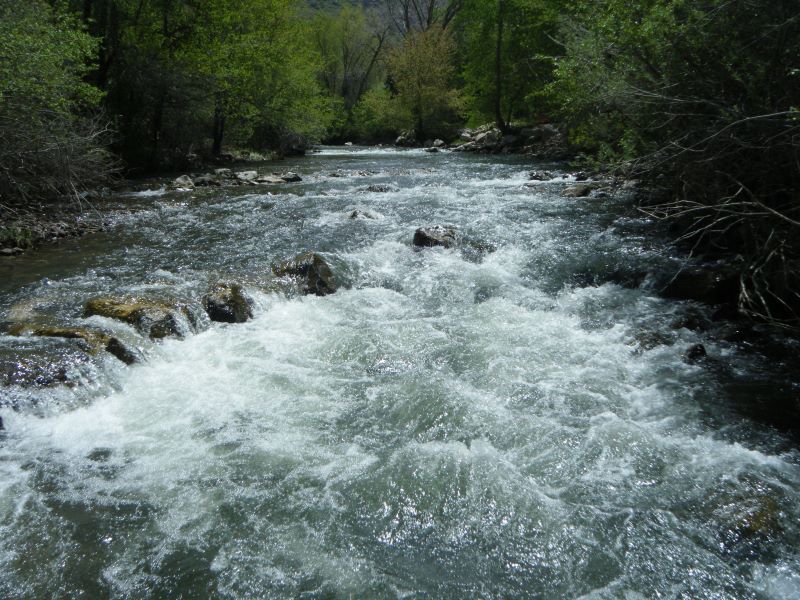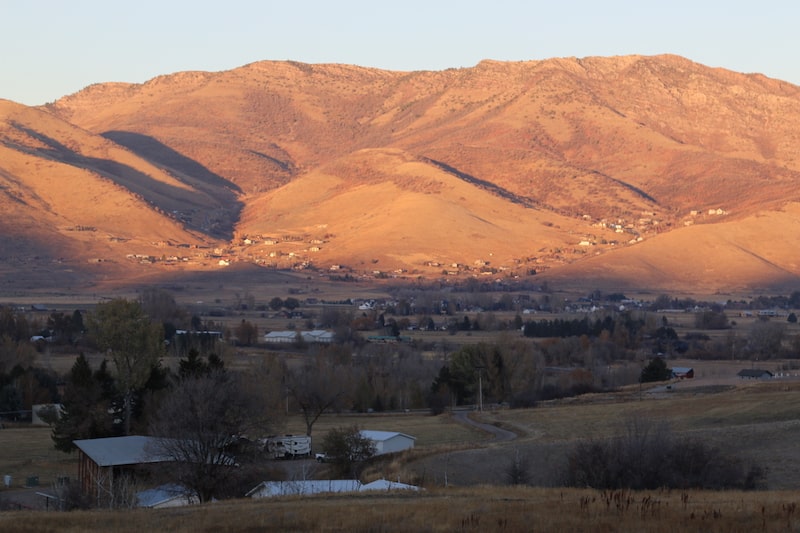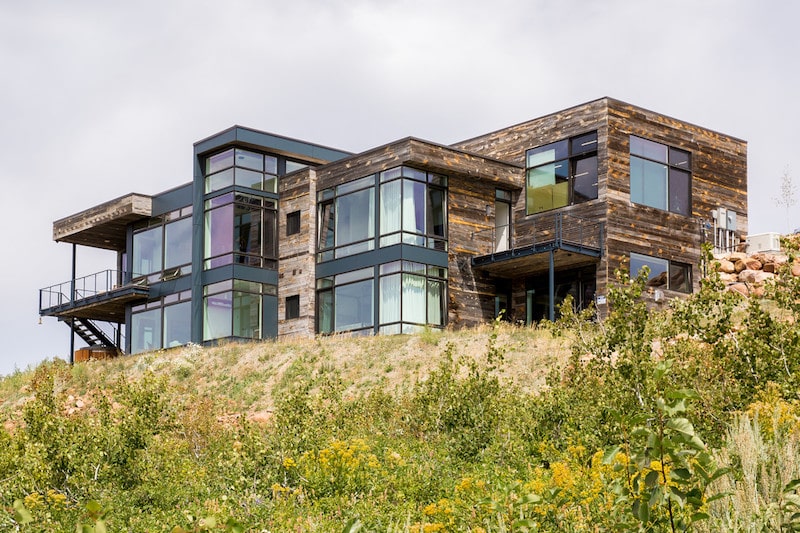 Strict water restrictions, combined with fast growth, hit the upper Ogden Valley hard in 2021, causing some farmers and ranchers to rethink their livelihoods. The U.S. Drought Monitor shows most of Utah in extreme drought.
Strict water restrictions, combined with fast growth, hit the upper Ogden Valley hard in 2021, causing some farmers and ranchers to rethink their livelihoods. The U.S. Drought Monitor shows most of Utah in extreme drought.
By August 2021, Pineview Reservoir had shrunk to 24 percent of its normal size. The Wolf Creek Water & Sewer Improvement District imposed a moratorium on new water connections, halting service to new home construction until another water source is found. But new homebuyers keep arriving, some who discovered during the Covid-19 pandemic that their jobs could be done remotely. But preliminary data from a Bowen Collins & Associates study projected the valley would reach buildout years sooner than previously anticipated. Their final report is due out in February.
Dee Staples, president of the Wolf Creek Irrigation Company in Eden and a self-described “wannabe” rancher, raises about 40 head of steer he sells as naturally-fed beef. “Most of our irrigation comes from early snow runoff,” he said. This satisfies his 1861 senior water rights through April and May, then dwindles. In unusually wet years, conservation helps the water stretch. But this year, dry conditions ushered in harsh restrictions.
“I buy 600-lb steers in the fall, feed them hay through the winter, put them on grass in the summer, then butcher them the next fall,’’ Staples said. “This is the first year in about 15 that I haven’t bought calves in the fall.”
Dave Brown moved to the upper Ogden Valley in 1989, where he’s farmed up to 300 acres at times. But in 2021, he only worked his own 17-acre farm growing alfalfa hay that helped feed Staples’ steers. Brown said he had a good season – due mostly to prayer and loss of sleep.
“I had to set alarms that would go off at 2 or 3 am to (go out and) cut the water off,” Brown said. “Most people aren’t going to do that. It messes up your whole night.” But new development and skyrocketing property taxes convinced Brown to move on. “I bought a farm back home in Virginia … I wish I was there now,” Brown said, but he still has loose ends to tie up.

Gay Browning’s family has farmed and ranched in the Eden area for four generations. “We have 180 to 200 head of cattle, depending on the year, and we raise hay to feed them,” Browning said. “We have about 1,000 acres, but only 350 of hayfields. The rest is sagebrush that goes up the slope.” This year the back half of their ranch – where cattle feed through the winter – went dry. “It was the first time Gertsen (Creek) dried up and we had no stock water,” Browning said. In addition to senior water rights in Pineview Reservoir, Browning also owns shares in Causey Reservoir. But that source also cut off early this past summer. “It’s getting really frightening,” Browning said.

Construction boom
Summit purchased Powder Mountain in 2013 with plans to remake the ski resort into a millionaire mecca. Naturally, locals were suspicious. By 2015, local water companies challenged Summit’s right to pump water from its two mountaintop wells, fearing reduced stream flows for wildlife and livestock. That costly challenge resulted in a mitigation agreement where Summit would build a 20-acre-foot reservoir for Wolf Creek Irrigation to supplement their water supply.
Mark Schroetel, CEO of Summit Mountain Holding Group, said supply chain issues have delayed construction, but the reservoir should be ready to fill in April 2022, keeping it in line with the agreement’s target date.
While Summit’s developed water resources will support about 900 units, Schroetel said they only have 48 certificates of occupancy so far. “We haven’t been taxing the resources at all.”

John Lewis, developer of Wolf Creek Resorts and other subdivisions, has lived in the valley 26 years and currently chairs the Ogden Valley Planning Commission. When Wolf Creek Water & Sewer imposed its moratorium in August, Lewis made plans to drill his own well that would reach aquifers 300 to 400 feet below the surface.
Using data from a 2019 Utah Geological Survey study, Lewis concluded that “it’s not a matter of if we have water, it’s more a matter of where it is.”
No home construction happens without a local water company first signing off on it, Lewis added. But increased demand is driving the speed of development in the upper valley.
“The growth has exponentially changed in the last two years since the pandemic,” Lewis said. “The people showing up here just want out of big cities.”
RELATED CONTENT
They are stealing our water, Liberty Utah
Will Utah Have Enough Water to Sustain Its Booming Population?
Water In The West: Should We Demolish Glen Canyon Dam?
Subscribe to Utah Stories weekly newsletter and get our stories directly to your inbox





